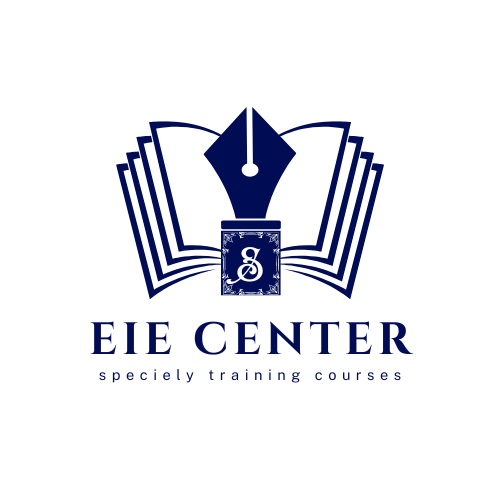Reliability in Process Equipment & Piping Systems: Failure Prevention & Repair Strategies

About Course
The mechanical integrity and reliability of process equipment and piping systems can only be achieved if they are designed by competent engineers and operated and maintained effectively within the design envelope, namely, the integrity operating window (IOW).
This reliability and repair tactics for process equipment and piping systems conference provides the appropriate mix of fundamentals, methodologies, best industry practices, and practical tools to enhance the competencies and improve the performance of design, operation, and maintenance technical professionals individually and collectively to add value to the organization and improve plant safety and reliability.
Participates in the reliability and repair tactics for process equipment and piping systems conference, where experts delve into optimizing maintenance reliability and enhancing the performance of piping systems and process equipment. This reliability training conference offers invaluable insights into reliability-centered maintenance, failure prevention, and repair strategies. Elevate your skills with maintenance reliability certification and process design course, ensuring you can tackle challenges effectively and maximize operational efficiency.
Conference Objectives
At the end of this reliability and repair tactics for process equipment and piping systems conference, the participants will be able to:
- Increase awareness and understanding that the mechanical integrity of process equipment and piping systems depends jointly on the equipment’s proper design, operation, condition assessment, and maintenance, underscoring their vital individual and team roles in managing change.
- Explore practical and sound methods and tools to enable them to perform basic design calculations for pressure equipment following applicable industrial codes, standards, and best practices.
- Understand the degradation mechanisms that process equipment could be subjected to over their operating life, how to identify them, predict and determine their impact, and what appropriate measures can be taken to prevent and control the damage.
- Gain the knowledge and failure analysis skills they need to conduct damage and failure analysis to prevent similar failures from happening.
- Gain knowledge and skills in hazard identification, analysis, risk assessment, and management.
Targeted Competencies
Upon the end of this reliability and repair tactics for process equipment and piping systems conference, the target audience will be able to:
- Working knowledge in mechanical design of pressure equipment and piping systems in compliance with applicable codes, standards, and regulations – ASME B&PVC Section VIII, B31.3.
- Learn about the interdependence of design, operation, and maintenance for achieving mechanical integrity of pressure equipment and piping systems.
- Understand, predict, Identify, and assess active degradation mechanisms and the failures they may cause.
- Learn about failure investigation techniques and root cause analysis.
- Apply risk-based methodologies in inspection and maintenance – API 580.
- NDT methods and their practical application – ASME B&PVC Section V.
- Perform Level 1 fitness-for-service assessment – API 579.
- Learn what engineering materials’ properties and selection criteria are for specific applications.
- Hazard identification and risk analysis and management.
Conference Content
Unit 1: Key Design Considerations, Guidelines, and Practices
- Overview of process equipment.
- Plant integrity and reliability.
- Understand the interdependence of engineering, operation, and maintenance.
- Management of change.
- Fitness for purpose.
- Learn about service conditions, equipment sizing, and functional performance.
- Learn about business-focused facilities of the appropriate quality at the lowest life cycle cost.
- Safety by Design.
- Understand the worst foreseeable credible scenarios, safeguarding, and best industry practices.
- Codes, Standards, Industry Practices.
- Overview of compliance with regulations and acts of HS&E requirements and considerations.
Unit 2: Design and Operation of Pressure Equipment
- Overview of pressure vessels and reactors.
- Materials of construction and standards.
- Basic design methodology.
- ASME boiler and pressure vessel code sections 2, 5, 8, and 9.
- Learn worked examples.
- Storage tanks.
- Learn about the types and applications of cone roof tanks and floating roof tanks.
- Basic design methodology.
- Overview of API 650.
Unit 3: Piping Systems
- Materials of construction and standards.
- Learn about the basic design methodology in hydraulic design, pressure integrity, and mechanical integrity.
- ASME B31.1 and B31.3.
- Piping flexibility and support.
- Piping system components – valves and fittings classes, ratings.
- Learn worked Examples.
Unit 4: Overpressure Protection
- Learn about the types and applications of pressure-relieving devices.
- Code requirements.
- Sizing methodology: API 520 and 521.
- Understand specific operation and maintenance requirements: API 576.
Unit 5: Design and Operation of Thermal Equipment
- Process heaters.
- Learn about types and configuration box types and vertical cylindrical types.
- Thermal and mechanical design.
- API 560, and API 530.
Unit 6: Boilers
- Learn about the types and configurations of water tubes, fire tubes, and waste heat recovery boilers.
- Fundamentals of design and operation.
- Operate efficiency and testing.
- ASME B&PVC Section 1 and Section 4, ASME PTC-4.
Unit 7: Heat Exchangers
- Types and applications include tube heat exchangers, plate heat exchangers, and air-cooled heat exchangers.
- Thermal and mechanical design.
- Overview of TEMA standards, API 660, API 661.
- Operate, fouling, and effectiveness.
Unit 8: Design and Operation of Fluid Handling Equipment
- Pumps.
- Learn about the types and applications of centrifugal and positive displacement.
- Performance characteristics.
- Select and design considerations and standards ANSI, API 610.
- Learn worked examples.
Unit 9: Compressors
- Types and applications centrifugal, screw, reciprocating.
- Design considerations and standards.
- Operation and troubleshooting.
Unit 10: Electric Motors
- Types and applications.
- Operation and troubleshooting.
- Condition monitoring.
- Vibration monitoring.
- Lubricat oil analysis.
- Troubleshooting.
- Methodology and guidelines.
- Reliability improvement.
Unit 11: Degradation and Condition Assessment of Process Equipment
- Degradation processes.
- Understand corrosion, erosion, fatigue, and hydrogen attack.
- Overview of API 571.
- Learn about industrial failures and failure prevention.
- Inspection and testing.
- Inspection strategies, plans, and coverage are a natural function of inspection.
- Understand Nondestructive Testing (NDT) methods and their characteristics and applicability.
- Risk-Based Inspection (RBI).
- Overview of API 580 and API 581.
- Fitness-for-service assessment.
- Overview of API 579.
- Learn worked examples.
- Overview of maintenance strategies and best practices.
- Learn about the optimum mix of reactive, preventive, and predictive methods.
- Reliability Centered Maintenance (RCM).
Unit 12: Failure Mechanics
- Wear and failure mechanisms.
- Imperfections and defects.
- Corrosion mechanisms.
- Failure modes.
- Fatigue.
- Fret.
- Learn about creep and thermal fatigue.
- Stress corrosion cracking, other modes.
- Material properties and selection.
- Carbon and alloy steels.
- Nickel, titanium, and specialty alloys.
- Aluminum and aluminum alloys.
- Copper and copper alloys.
- Plastic piping.
- Alternative options-linings and cladding.
- Limitations and safeguards.
- Learn about material selection in the economic cycle of costing.
Unit 13: Failure Prevention By Design
- Failure causes – design, operation maintenance, Other Causes.
- Material properties and selection.
- Understand the physical properties and limitations of components.
- Understand the physical properties of steel and alloy piping and tubing.
- Physical properties of fittings.
- Basic design.
- Pressure vessels.
- Piping systems.
- Liquid storage tanks.
- Operate and maintenance of process equipment.
- Damage mechanisms affecting process equipment.
Unit 14: Process Equipment Failures
- Learn about failures in pressure vessels, piping, and boilers.
- Strength reduction through material loss.
- Case histories.
- Piping system vibration.
- Mechanical and flow-induced resonance.
- Transient hydraulic pulsation.
- Pipe supports and restraints.
- Wind loading.
- Industry practices for failure prevention.
Unit 15: Inspection, Assessment, and Maintenance
- Overview of inspection strategies, plans, and procedures in the risk-based inspection (API 580).
- Develop an RBI plan.
- Learn about fitness-for-service assessment (API 579).
- NDT methods and techniques.
- Probability of detection.
- Damage characterization.
- Select the correct technique(s).
- Pigging of pipelines.
- Smart pigging.
- Cleaning.
- Operational procedures.
Unit 16: Operation and Maintenance
- Maintenance programs.
- Repair and alteration of pressure equipment and piping.
- Rerate piping and pressure vessels.
- Understand the estimation of consequences of pressure vessels and piping failures.
- Failure analysis techniques.
